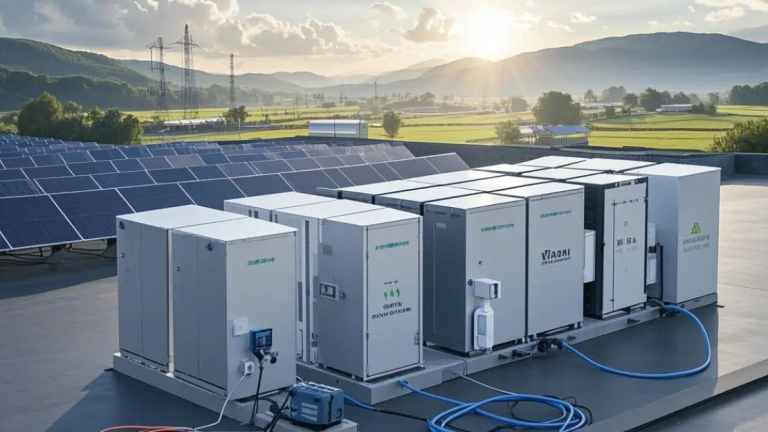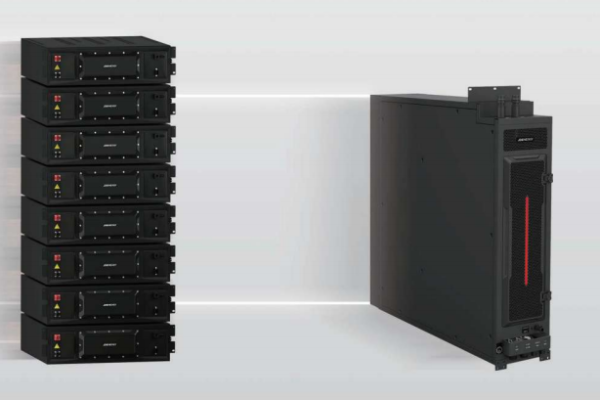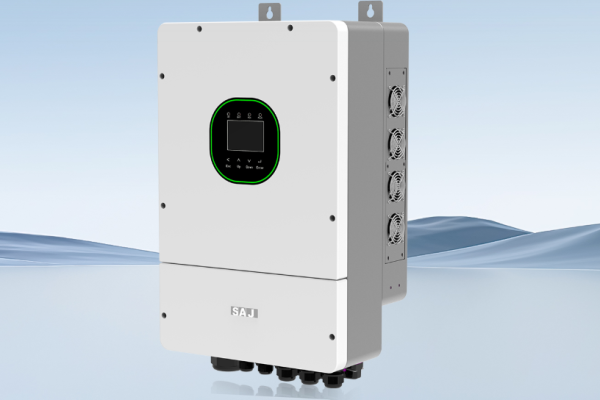🌞 Introduction: The Role of Inverter Control in PV+ESS Systems
As solar PV continues to scale in commercial and residential sectors, PV+ESS (Energy Storage System) solutions are becoming the new standard. At the heart of these systems is the hybrid inverter, which coordinates solar generation, battery storage, and grid interaction.
But simply installing a hybrid inverter is not enough. How the inverter is controlled—in real time and across different operating modes—determines the system’s efficiency, economic performance, and grid compliance.
In this article, we explore the control strategies, communication protocols, integration methods, and real-world tips for effectively managing hybrid inverters in PV+Storage systems.
⚙️ What Is a Hybrid Inverter?
A hybrid inverter is a bidirectional power electronics device that can:
- Convert DC from solar panels to AC (PV inverter function)
- Charge/discharge batteries (battery inverter function)
- Manage grid export/import
- Interface with Energy Management Systems (EMS)
Unlike standalone PV or battery inverters, hybrid inverters consolidate both functions, enabling intelligent coordination between solar generation and battery operation.
🎯 Key Control Objectives in PV+ESS Systems
To make the system function optimally, hybrid inverters need to fulfill several control objectives:
| Control Function | Goal |
|---|---|
| MPPT (Maximum Power Point Tracking) | Optimize solar power harvest |
| Battery charge/discharge control | Maximize self-consumption or arbitrage |
| Grid interaction (export/import) | Comply with export limits and tariff optimization |
| Backup mode (islanding) | Seamless power supply during outages |
| Time-based scheduling | Operate according to TOU pricing |
| Demand response | Participate in DR programs or curtail loads |
| Black start | Restart system during blackouts |
🧠 Modes of Operation
Modern hybrid inverters support multiple operating modes. Choosing the right mode (and switching between them intelligently) is essential.
1. Self-Consumption Mode
- Prioritizes using PV energy to power local loads
- Excess PV charges the battery
- Grid export is minimized or blocked
✅ Best for residential or small C&I systems with TOU tariffs or net metering limits
2. Time-of-Use (TOU) Mode
- Charges batteries during off-peak rates
- Discharges during peak tariff periods
✅ Best for C&I projects focused on tariff arbitrage
📌 Related reading:
How to Design ESS for Peak Shaving and Load Shifting
3. Backup or Emergency Mode
- Inverter isolates from the grid
- Provides AC power from batteries + PV during outages
- Requires ATS (automatic transfer switch) or built-in backup port
✅ Best for critical load support in homes or factories
4. Peak Shaving / Demand Charge Reduction
- Inverter discharges battery to reduce grid load during peak demand
- Triggered by load threshold or EMS signal
✅ Used in commercial settings with high demand charges
🔌 Communication Protocols and System Integration
To achieve intelligent control, hybrid inverters must communicate with other system components. Key interfaces include:
| Interface | Devices | Protocols |
|---|---|---|
| EMS ↔ Inverter | Central controller | Modbus TCP, RS485, CAN |
| BMS ↔ Inverter | Battery management | CAN, RS485 |
| Smart Meter ↔ Inverter | Load + export sensing | Modbus |
| Grid operator ↔ Inverter | Remote control or DR | Sunspec, IEEE 2030.5 |
📌 EMS = Energy Management System
📌 BMS = Battery Management System
🧩 Real-Time Control Scenarios
Here are some practical scenarios where inverter control logic makes a significant difference:
A. TOU Tariff Optimization
| Time Slot | Action |
|---|---|
| 10:00–16:00 | Charge battery from solar |
| 17:00–21:00 | Discharge battery to serve load |
| 21:00–07:00 | Import from grid (off-peak) if needed |
Inverter must support:
- Time-based rules
- Priority management (PV vs. grid charging)
- SOC (state of charge) thresholds
B. Grid Export Limitation
In many countries (e.g., parts of Australia, Germany, Southeast Asia), grid feed-in is restricted.
Hybrid inverter must:
- Curtail PV when batteries are full and load is low
- Enable zero export via meter feedback
- Control based on real-time current sensors
C. Virtual Power Plant (VPP) Participation
Hybrid inverters can be integrated into cloud platforms that aggregate many small systems.
Requirements:
- Remote dispatch control
- Fast communication protocols
- Cloud API integration
Advanced inverters support OTA firmware updates and APIs for fleet management.
🛠️ Configuration Example: 10 kW Hybrid System
System Components:
- 10 kW Hybrid Inverter
- 20 kWh LFP Battery
- 12 kWp PV array
- Smart meter + EMS gateway
Control Setup:
- Smart meter measures export/import
- EMS sets TOU discharge schedule
- Inverter maintains SOC within 20–95%
- If blackout detected → switch to backup port
Result:
- 80%+ PV self-use
- <5% grid export
- Reliable backup for 2 hours @ full load
🔒 Key Features to Look for in Hybrid Inverter Control
| Feature | Why It Matters |
|---|---|
| Configurable charge/discharge windows | Needed for TOU optimization |
| SOC control and reserve settings | Protect battery longevity |
| Remote monitoring and updates | For troubleshooting and fleet ops |
| Real-time PV curtailment | For zero export compliance |
| Black start capability | Critical for grid-independent restart |
| Multi-protocol support (Modbus/CAN) | Ensures compatibility with batteries and EMS |
💡 Hybrid Inverter Control Best Practices
- Size inverter and battery together — mismatch leads to control errors
- Use certified meters and communication cables
- Regularly update inverter firmware
- Set minimum SOC limits to preserve battery health
- Log data to track system response vs. control logic
- Test backup functionality under real-world conditions
🔗 Internal Resources (Optional Interlinking)
🤝 Conclusion: Intelligent Control Enables Business Value
A well-designed PV+ESS system is only as good as its inverter control strategy. By leveraging hybrid inverters with advanced control features, installers and integrators can unlock:
- Higher ROI through tariff optimization
- Better energy independence
- Stronger grid compliance
- Real-time system visibility
At GR-Newenergy, we help clients select and configure hybrid inverters that meet their technical goals, budget, and deployment timeline.
📩 Looking to integrate PV+Storage for your SME or project clients?
Reach out for custom inverter-battery pairing and EMS advice.
Contact us →









